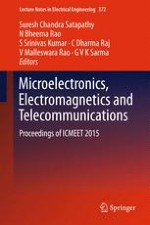2016 | OriginalPaper | Chapter
Estimation of RCS for a Perfectly Conducting and Plasma Spheres
Authors : Swathi Nambari, G. Sasibhushana Rao, K. S. Ranga Rao
Published in: Microelectronics, Electromagnetics and Telecommunications
Publisher: Springer India
Activate our intelligent search to find suitable subject content or patents.
Select sections of text to find matching patents with Artificial Intelligence. powered by
Select sections of text to find additional relevant content using AI-assisted search. powered by
